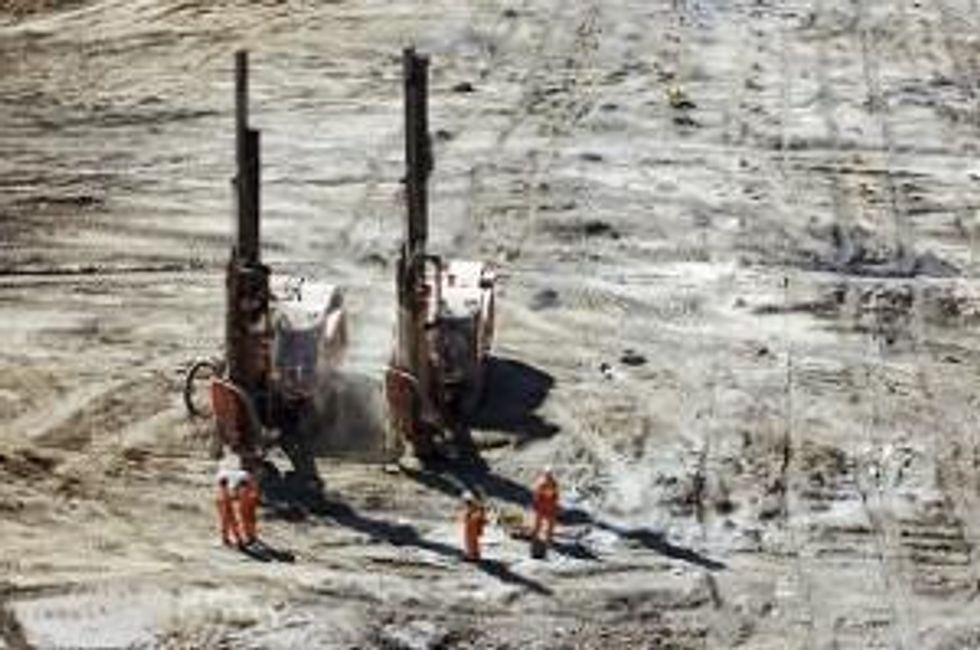Mining drill results are full of jargon and terms that are difficult for investors who are not geologists to understand. Resource Investing News talked to a mining expert to demystify some of the terms that gold companies and other juniors in the precious metals sector often use to discuss drilling results.
Resource Investing News talked with Christopher Ecclestone, principal and mining strategist at New York-based Hallgarten & Company. Ecclestone, who is also a director of Mediterranean Resources (TSX:MNR), a gold mining company listed on the Toronto Stock Exchange, answered questions that will help investors better understand the drill results of gold and precious metals miners.
Ecclestone pointed out, “mining results are all about grade, grade, and more grade. But then, after the grade, the length of the intercept is important. One should also look for lots of drill holes.”
RIN: What are the different types of drill programs that companies engage in (diamond, reverse circulation, step out, etc.)? What is the difference between them?
Christopher Ecclestone: Reverse circulation does not provide results that are as comprehensive as diamond drilling. It is a way to find some preliminary material. And if you have something substantial, you might start diamond drilling.
In the scale of things, diamond is an A-grade and reverse circulation is a C-grade drill hole.
RIN: What do drill maps showing drill holes tell investors?
CE: In a drill map, investors should look for the patterns that are there. If you have a situation where there are five drill holes stretched out over a mile, you could ask if they accurately reflect the deposit. If there are not enough drill holes, the deposit may not be as comprehensive as you think it is.
RIN: Is there a set standard for the number of holes that should be drilled?
CE: It does not work like that. What is important is how close the holes are to each other, what the grade is, and what the depth is. If you have a drill that is 300 meters deep and if you get mineralization in the last 10 meters, it is not very good. You cannot do an open pit, you will have to go underground, and it might not be worth the depth.
Drilling is a lot cheaper if the deposit is shallow.
RIN: Why is it important for investors to see the angles the holes were drilled at and to see cross sections of such maps?
CE: It is not that important for investors. Some investors, what they want to do is see if there is a significant pattern there to determine if there is enough mineralization all over the place.
RIN: Can you briefly explain grades? What are the benefits of a high-grade, low-grade deposit?
CE: If it is a high-grade deposit it is a good indicator of the extent of mineralization. If the grade is small, it may not be worth drilling. In gold mining, 10 g/t is a high-grade deposit for gold. 1 g/t is a low grade that shows the area is not very densely populated with gold.
But it all depends on the price of gold. At current prices, even lower-grade deposits make sense to drill as the price justifies the expense involved in drilling.
Silver grades work differently and are in ounces per ton and also involve the different by-products such as lead and zinc, and also whether there is gold in the mix. But multiple ounces per ton is a good grade deposit.
RIN: Do different types of deposits (poryphyry, vein, etc.) affect the type of grade?
CE: Poryphyry tends to be massive, so it is a large lump of mineralization. A deposit is either poryphyry or vein. Despite a deposit being poryphyry or vein, what’s important is the grade of the deposit. Different companies can make a success of either type of deposit.
A poryphyry could be spread over kilometers.
Veins are not that large. They can be thick, but not that thick that you will get a 30-foot wide vein. A half-meter, meter, or two-meter vein is regarded as thick.
RIN: What is a strike and why should investors pay attention to its length?
CE: The strike is the part where you have encountered the mineralization. When you drill barren rock, strike is where you drill the mineralized ore.
A vertical strike length of 300 meters means the deposit is 300 metres deep. A vertical strike length of 50 meters means the deposit is 50 meters from the top of the deposit to the bottom. It’s not that one is better than the other.
A horizontal strike length shows how far the area of mineralization is spread over.
RIN: What does the phrase “at depth” mean? Why should investors watch for specific depths?
CE: At depth means that the deposit keeps going down. “Open at depth” means that drilling has not defined yet where the deposit bottoms out.
RIN: What does “drill intercept” mean? For instance, “drill intercepts included 52.5 m of 2.1 g/t gold which included 2.6 m of 5.2 g/t gold.”
CE: It means that at 52.5 meters there was a good strike of ore, but also that there was a richer hit of ore over a subset of 2.6 meters in the larger mineralized length.
RIN: Can you explain concentration of ore? For instance, is 237.6 g/t from a hole a good concentration of gold? What about 2.1 g/t?
CE: That is a bonanza grade. The higher the concentration, the higher the grade, the richer the deposit is. But you have to take into account intercepts and depths of the concentration.
Securities Disclosure: I, Karan Kumar, hold no positions in any of the companies mentioned in this article.
